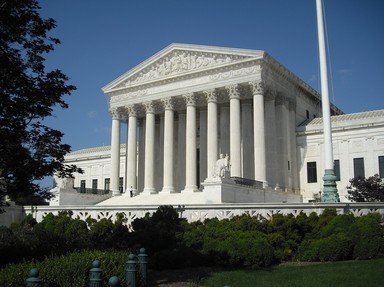Quiz Answer Key and Fun Facts
1. In the case of United States v. Windsor, the Supreme Court issued its long-awaited decision on the Defense of Marriage Act (DOMA), a 1996 federal law which barred same-gender married couples from being recognized as "spouses" for purposes of federal laws. What did the court decide?
2. In 2013 the Supreme Court considered two cases in which drug-sniffing dogs were used to detect drugs, followed by a search. One search was of a car stopped on a public highway, while the other took place on the porch of a house. How did the Court decide these cases?
3. In Hollingsworth v. Perry, the Supreme Court considered the constitutionality of California's ballot initiative limiting marriage to opposite-sex couples. What did the Court decide?
4. The Voting Rights Act of 1965 came under fire in the case of Shelby County v. Holder. Did the court rule the Act unconstitutional, either in whole or in part?
5. In Peugh v United States, defendant Peugh was sentenced in accordance with federal sentencing guidelines which went into effect after the date of his crimes, raising an ex post facto issue. How did the court rule?
6. Clapper v. Amnesty International brought the issue of surveillance of foreign communications under the Foreign Intelligence Surveillance Act (FISA) before the Court. How did the Court rule?
7. In the case of Arizona v. Inter Tribal Council of Arizona, the Supreme Court considered the validity of Arizona's law requiring proof of citizenship before registering to vote in federal elections. Did the court uphold this
Arizona law?
8. In Missouri v. McNeely, the Court considered the question of whether a warrantless blood sample can be taken routinely from DUI suspects in every case. How did the Court rule?
9. In Salinas v. Texas, the prosecutor was permitted to comment on the defendant's silence after an officer who was questioning him asked a particular question. Did the Supreme Court find this was a violation of the defendant's Fifth Amendment right not to incriminate himself?
10. In Maryland v. King, the court considered the constitutionality of state laws requiring those arrested for serious offenses to provide a DNA sample. Did the court find these laws constitutional?
Source: Author
chessart
This quiz was reviewed by FunTrivia editor
gtho4 before going online.
Any errors found in FunTrivia content are routinely corrected through our feedback system.
